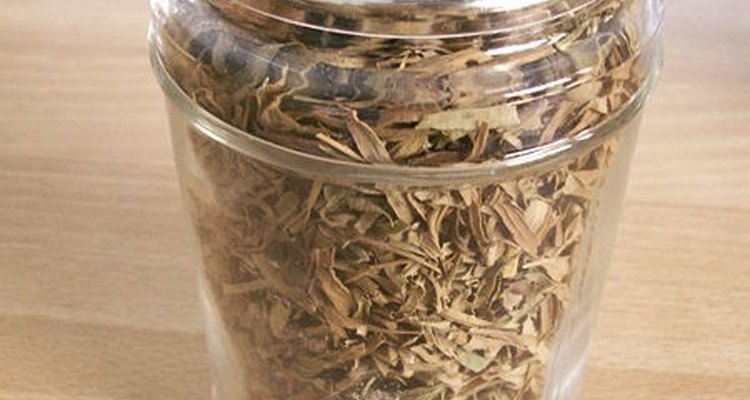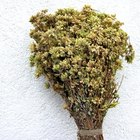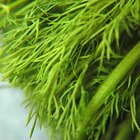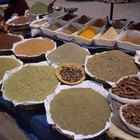
Nicknamed the “dragon herb,” tarragon (Artemisia dracunculus) grows in most countries north of the equator. The French form of tarragon, prized in culinary use, is the only variety with adequate spice production. It propagates freely in the garden by root tendrils that spread underground but it does not produce a viable seed. Two other varieties of tarragon, Russian and Mexican, are mild in comparison and are actually members of the marigold family. Drying tarragon requires careful harvesting and a warm, dark location.
Watch your tarragon plant closely. The time to harvest and dry the leaves is just before the plant flowers but after it buds. At this stage, there is vigorous energy going into the production of the spice in the leaves. Once the plant flowers, the energy shifts into seed production and away from the leaves, which may lose flavor at that point.
Cut the tarragon stems within 1-inch of the base of the plant. Don’t worry about harming the plant, as it will grow new stems.
Tie the large ends of the tarragon stems together carefully, using the string. Do this by winding the string along the bottom 1-inch of the stem bundle and knotting it. Make a little loop of string at the end of the stem bundle to hang your tarragon.
Choose a warm dark location free from drafts, like an attic, if you have one or, alternately, use a large paper bag. The bag you choose should be taller than it is wide and big enough to hold the entire tarragon stem bundle without the leaves touching the interior portion of the bag.
Prepare the paper bag by opening it and standing it upright on the counter top. Gather the top portion of the bag in a drawstring fashion but don’t tie it yet.
Place your harvest upside down in the bag, holding the base while you re-gather the top around the stem base. Tie the gathered part of the bag loosely, leaving a little space where air can circulate into the bag.
Place the bag in a warm spot, like the top of your refrigerator and allow the tarragon to dry until the leaves are very dry and golden brown, usually about two to three weeks.
Related Articles

How to Make a Sustainable Woodland ...

How to Dry or Freeze Oregano

The Difference in Fresh or Dry Oregano

How to Make Rubbed Sage

How to Parboil Artichokes

Classic Russian Spices

Can You Still Use Basil That Goes a ...

How to Dry Artichokes

How to Dry Sage

How to Freeze Ramps & Wild Leeks

Nigerian Herbs & Spices
How Do I Clean Water Cress?

How to Cook With Pineapple Sage
Can You Eat Chicory Raw?
How to Cook Brussels Sprout Greens

How to Freeze Thyme in a Bag
How to Julienne Mint

Types of Taro

What Kinds of Nuts Don't Grow on Trees?

How to Dry Fresh Parsley
Writer Bio
Glenda Taylor is a contractor and a full-time writer specializing in construction writing. She also enjoys writing business and finance, food and drink and pet-related articles. Her education includes marketing and a bachelor's degree in journalism from the University of Kansas.
Photo Credits
Photo, curtesy of Wikipedia Commons